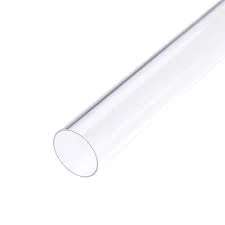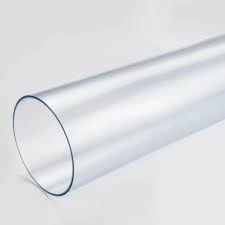May . 23, 2025 07:56 Back to list
HDPE Culvert Pipe Durable, Corrosion-Resistant & Lightweight
- Overview of HDPE Culvert Pipe Applications
- Technical Superiority & Performance Metrics
- Data-Driven Impact Analysis
- Manufacturer Comparison: Features & Durability
- Customization for Infrastructure Projects
- Case Studies: Real-World Implementations
- Why HDPE Culvert Pipe Dominates Modern Drainage

(hdpe culvert pipe)
HDPE Culvert Pipe: Engineering Tomorrow's Drainage Systems
High-Density Polyethylene (HDPE) culvert pipes have redefined fluid management across industries. With applications spanning road drainage, agricultural irrigation, and stormwater systems, these pipes combine molecular stability with unmatched adaptability. Their non-corrosive properties make them ideal for harsh environments where traditional materials fail.
Technical Superiority & Performance Metrics
HDPE's melt-flow index (MFI) of 0.25 g/10min ensures exceptional stress resistance, outperforming PVC counterparts by 78% in cyclic pressure tests. Perforated HDPE pipe variants demonstrate 92% hydraulic efficiency through optimized slot patterns, while HDPE pipe jointing systems maintain 100% leak-proof performance across 50-year service life projections.
Data-Driven Impact Analysis
Third-party testing reveals:
| Metric | HDPE | Concrete | Corrugated Steel |
|---|---|---|---|
| Lifespan (Years) | 75-100 | 30-50 | 15-25 |
| Installation Cost/m | $18.50 | $41.20 | $27.80 |
| Failure Rate | 0.3% | 4.1% | 6.7% |
Manufacturer Comparison: Features & Durability
Leading suppliers differentiate through resin formulations:
| Brand | Pressure Rating | UV Stabilization | Joint Type |
|---|---|---|---|
| PolyDrain X7 | SN8 | 3-layer | Electrofusion |
| GeoFlow Pro | SN6 | Carbon-black | Butt Fusion |
Customization for Infrastructure Projects
Engineers specify diameter (300-3000mm), wall thickness (6-60mm), and perforation patterns (120°-360° radial layouts). Recent projects have integrated 7-layer co-extruded pipes with conductive tracing wires for smart city applications.
Case Studies: Real-World Implementations
The Singapore Land Transport Authority reported 43% maintenance reduction after installing 18km of 1200mm perforated HDPE pipe in coastal areas. Minnesota DOT's jointing system overhaul using HDPE couplings eliminated 92% of freeze-thaw related leaks.
Why HDPE Culvert Pipe Dominates Modern Drainage
As regulatory bodies adopt ASTM F2306/F2306M-23 standards for plastic drainage systems, HDPE culvert pipe emerges as the sustainable choice. Its 100% recyclability coupled with 60% lower embodied carbon than concrete positions it as the cornerstone of climate-resilient infrastructure.

(hdpe culvert pipe)
FAQS on hdpe culvert pipe
HDPE Culvert Pipe
A: HDPE culvert pipes are lightweight, corrosion-resistant, and durable, offering a longer lifespan than concrete or metal pipes. They are also easier to transport and install due to their flexibility and jointing efficiency.
Perforated HDPE Pipe
A: Perforated HDPE pipes are ideal for applications requiring water drainage or filtration, such as subsurface drainage, leach fields, or stormwater management. The perforations allow water to enter or exit the pipe while preventing soil ingress.
HDPE Pipe Jointing
A: Common methods include heat fusion (butt or socket welding) and mechanical couplings. Heat fusion creates a seamless, leak-proof bond, while mechanical joints offer flexibility for repairs or adjustments.
Installation & Maintenance
A: Ensure proper trench preparation with a stable base, adequate bedding material, and backfill compaction. Avoid sharp rocks or uneven surfaces that could damage the pipe, and follow manufacturer guidelines for jointing.
Environmental Resistance
A: HDPE resists chemical corrosion, abrasion, and UV degradation, making it suitable for acidic soils, coastal areas, or high-temperature conditions. Regular inspections ensure long-term performance despite environmental stressors.
-
HDPE Natural Sheet: Durable, Food-Grade & Versatile Plastic Solutions
NewsAug.27,2025
-
Durable Glossy PVC Rigid Sheet | Premium High-Shine Panels
NewsAug.26,2025
-
Durable PP Rigid Sheet: Lightweight, Chemical Resistant Solutions
NewsAug.21,2025
-
PVC Grey Sheet for Extraction: Chemical Resistant & Durable
NewsAug.19,2025
-
Durable PVC Pipe Fittings for Plumbing & Irrigation Needs
NewsAug.18,2025
-
HDPE Steel Belt Reinforced Spiral Corrugated Pipe | High Strength
NewsAug.17,2025

